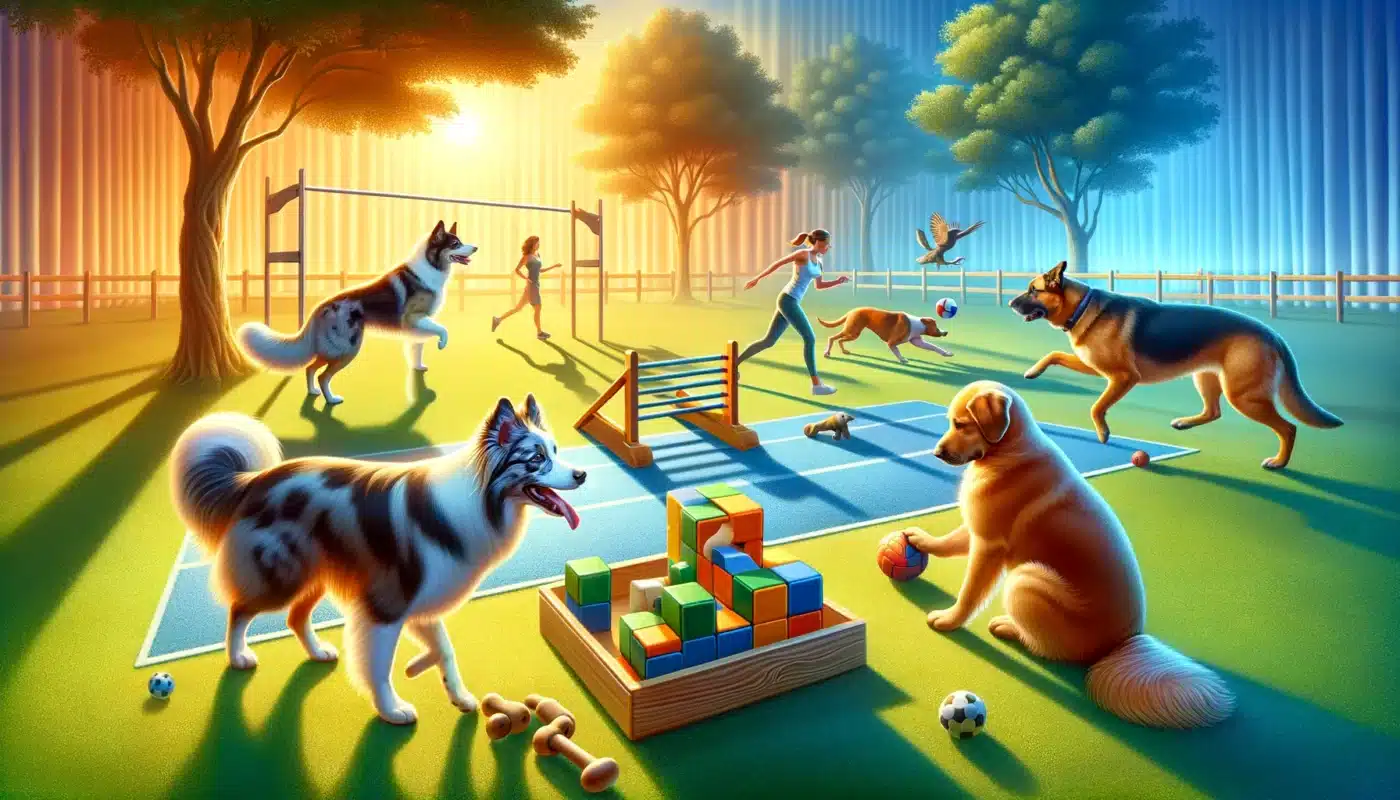dog anxiety, DogTraining, Health and wellness, Pet Behavior, Pet Care
Dog Anxiety or Lack of Enrichment? Unmasking the Mystery with Activities
Does Your Dog Have Anxiety or a Lack of Enrichment?
By Will Bangura, M.S., CBCC-KA, CPDT-KA, FFCP (Dog Behaviorist) Certified Dog Behavior ConsultantWhen we think about our canine companions, their well-being is often at the forefront of our minds. Just like us, dogs can experience anxiety, which can significantly impact their quality of life. However, it’s essential to consider whether what appears as anxiety might sometimes be a result of a lack of proper mental and physical enrichment. Let’s delve into this intricate topic, exploring how certain dog breeds are predisposed to anxiety and the vital role enrichment plays in their lives.
Understanding Anxiety in Dogs
Anxiety in dogs’ manifests in various forms, from subtle signs to more apparent behaviors. It can be due to several factors, including genetics, environment, and past experiences. But did you know that some dog breeds are more prone to anxiety due to their inherent traits and history?
For instance, breeds like Border Collies and Australian Shepherds, known for their high intelligence and energy levels, often require more mental stimulation than others. Without it, they can develop symptoms of anxiety. Similarly, breeds such as German Shepherds and Labrador Retrievers, who form strong bonds with their pet guardians, can experience separation anxiety when left alone.
The Role of Enrichment
Enrichment is crucial in mitigating anxiety, especially in breeds predisposed to it. Canine enrichment refers to activities and environments that provide mental and physical stimulation, addressing the innate needs of a dog. Without adequate enrichment, a dog’s pent-up energy and intelligence can manifest as what appears to be anxiety.
Physical Enrichment: More Than Just Exercise
Physical enrichment goes beyond regular walks. It’s about engaging your dog in activities that satisfy their natural instincts and provide a healthy outlet for their energy. For instance:
- Agility Training: This is fantastic for breeds like Border Collies and Australian Shepherds. Navigating through obstacle courses not only exercises their bodies but also provides mental stimulation
- Fetch and Frisbee: Simple yet effective, these games can significantly benefit high-energy breeds like Labradors and Jack Russell Terriers, offering both physical exercise and mental engagement.
- Swimming: For breeds like Labradors, swimming is an excellent form of exercise that’s gentle on the joints and great for overall fitness.
Mental Enrichment: Engaging the Canine Mind
Mental enrichment is just as important as physical activity. It’s about challenging your dog’s mind, keeping them mentally stimulated and engaged. Here are some ideas:
- Puzzle Toys: Toys that require dogs to solve puzzles for treats are excellent for mental stimulation. They are especially beneficial for intelligent breeds like German Shepherds and Border Collies.
- Training Sessions: Regular training sessions, focusing on new tricks or commands, provide mental stimulation. Positive reinforcement techniques are particularly effective and enhance the bond between pet and guardian.
- Scent Games: Engaging a dog’s sense of smell, such as hiding treats around the house or garden, is a fantastic way to provide mental enrichment. Breeds like Beagles, with their keen sense of smell, can particularly benefit from such activities.
Recognizing and Addressing Anxiety
It’s crucial to distinguish between anxiety and a lack of enrichment. While both can exhibit similar behaviors, their management differs. If your dog shows signs of distress, such as excessive barking, destructive behavior, or restlessness, consider whether their enrichment needs are being met. However, if these behaviors persist despite adequate physical and mental stimulation, it might be time to consult a professional for possible anxiety issues.
Creating an Enriched Environment
Creating an enriched environment for your dog is about understanding and catering to their specific needs. It involves:
- Consistency in Routine: Dogs thrive on routine. Having a predictable schedule for activities and rest can significantly reduce anxiety.
- Variety in Activities: Incorporating different types of physical and mental activities can keep things interesting for your dog, preventing boredom and anxiety.
- Socialization: Social interactions with other dogs and people are crucial for a dog’s mental health, especially for social breeds like Cocker Spaniels and Cavalier King Charles Spaniels.
While certain breeds are more prone to anxiety, often what is perceived as anxiety can be a lack of proper mental and physical enrichment. By understanding the specific needs of your breed and providing a balanced mix of physical and mental stimulation, you can significantly enhance your dog’s quality of life. Remember, every dog is unique, and what works for one might not work for another. Observing and understanding your dog’s individual needs is the key to a happy, healthy, and well-adjusted canine companion.


